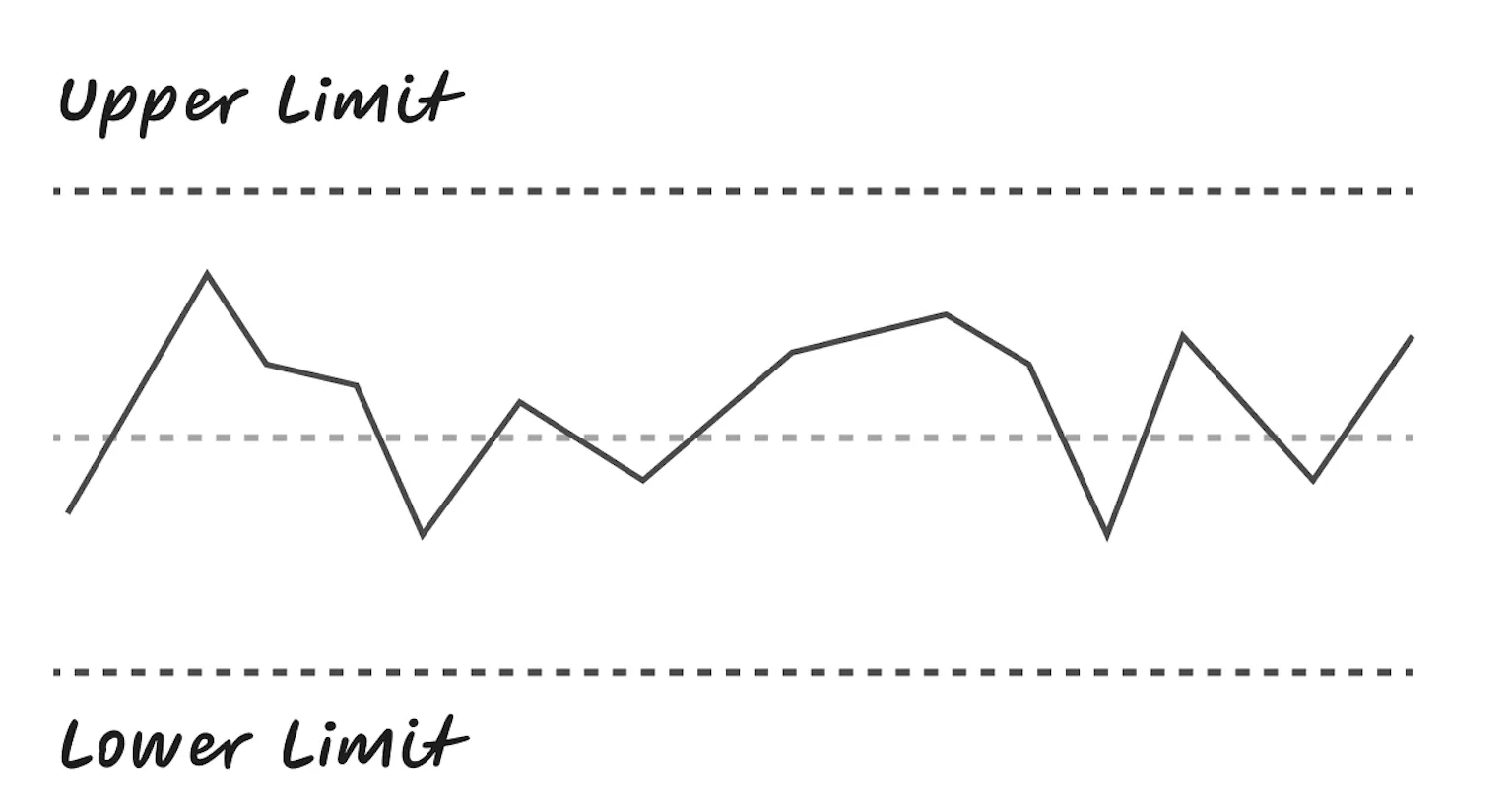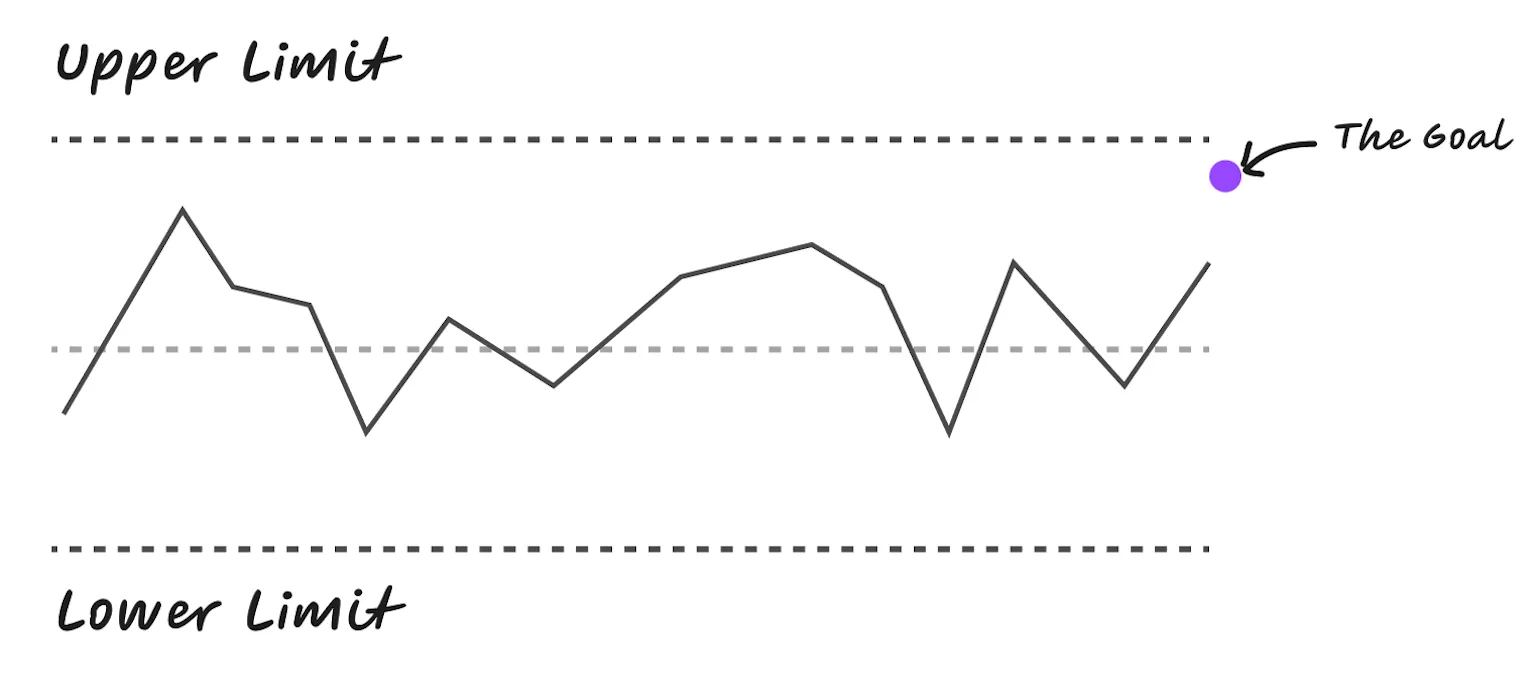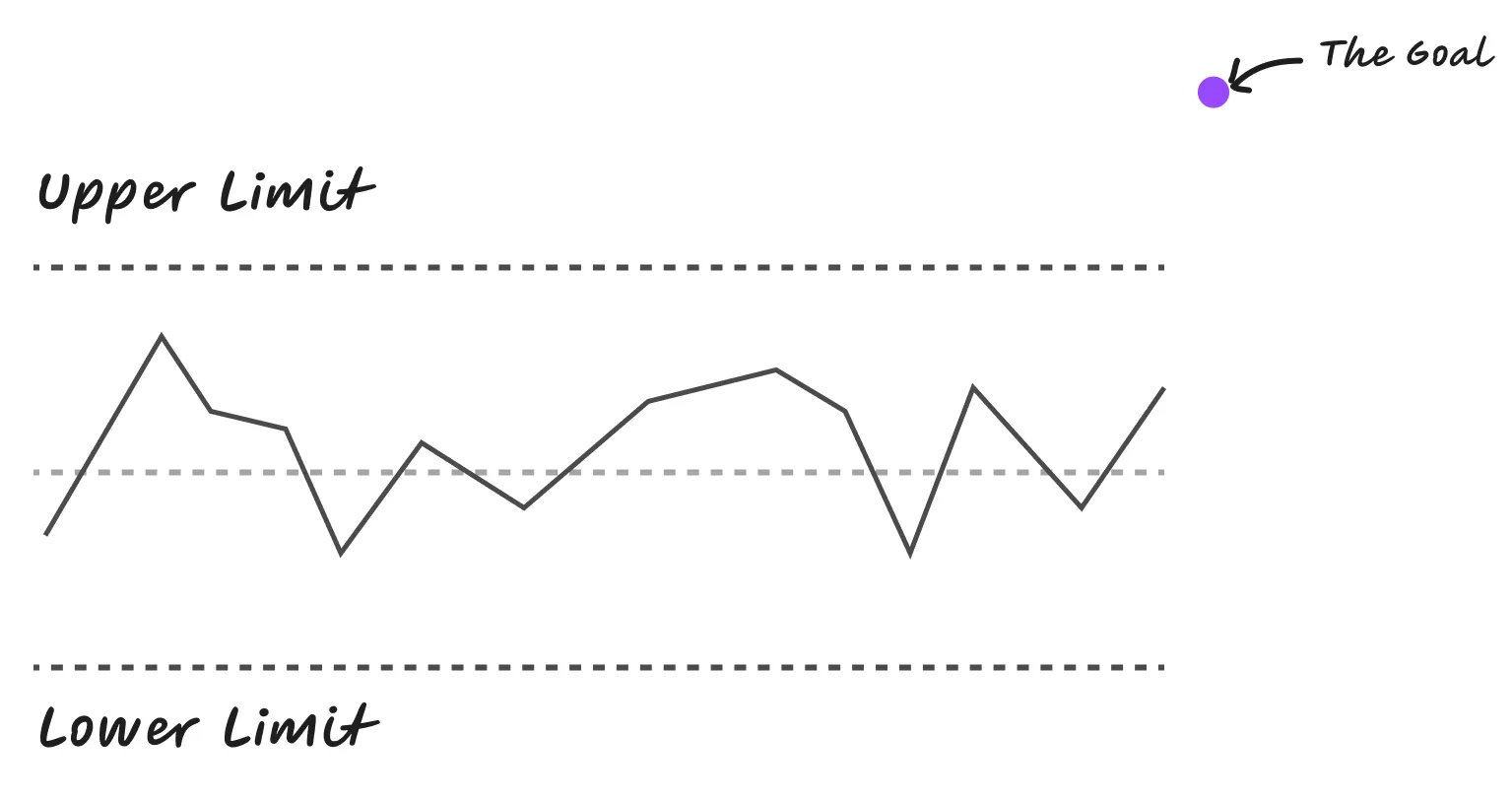
Transformational Goal Setting
Written by: Canaan Davis
Janurary 31, 2024 • 4 min read • 770 words
Every system of work has an output that it can achieve at any point in time. Think of that as how much of something that can be produced, consumed, or otherwise created. That output is not static but variable. For a system that is stable the output is predictable between an upper and lower limit.

When a system is stable, the way to improve its output is to transform the way that it produces its output. Said another way, we must improve the means by which we do work in order to improve our results.
An Example #
Imagine for a moment that we have a team that is expected to set a goal to achieve for the quarter. This team is told that they need to select an ambitious goal. The team is also held accountable for achieving that goal. Their compensation, reputation, and good standing with their boss depend on their success. The team decides on a goal that they believe is ambitious yet achievable.

Notice that the goal lies in the expected output of the system. It is true that it is on the upper end of that output, but the team doesn’t recognize this. They see what the output of the system was last quarter and settle on a goal that they feel they can reach. They feel confident that they can achieve this goal because they feel that it is within their reach. Which, as it turns out, it is.
The rub here is that in order to reach this goal, the team doesn’t have to necessarily do anything new or creative. The current system of work has the ability to produce this output, so the team can potentially perform the same activities and engage in the same behaviors that they have been engaging in and accomplish this goal.
This is a scenario that is all too common. The team thinks they are making progress, and the business itself may believe so as well. However, no significant transformation will occur until the means by which we produce our output are iterated and improved upon.
Another Example #
Now, let’s imagine another team. This team is given the same directive. They must choose an ambitious goal to set for this quarter. The difference between our first team and this new team is that our new team is not judged based on the successful completion of the goal. Instead of their compensation, reputation, and good standing with their boss hanging in the balance, they are judged on what they learn, how they apply those learnings to their system of work, and they are held accountable to the continuous improvement of the system.

Notice here that the team’s goal is well outside of the predictable limits of the system. They realize that they will most likely not hit the goal this quarter, but that doesn’t stop them from trying. They understand that trial and error are the keys to building organizational knowledge and that striving for goals that are well out of our reach forces us to collaborate more and think more creatively about how to solve problems.
The team can feel confident in setting this goal because they know that failure is not only an option but necessary in the pursuit of improvement. They have the psychological safety of knowing that aiming high and coming short will not result in a demerit but praise for the knowledge they gain along the way.
Ultimately, our second team is the one that will, in time, transform the business. They will prioritize improving the system of work so they can move their current output closer to the target condition that they have set. They will collaborate more, arrive at more creative solutions, and move faster. The team will have a higher level of engagement, and they will feel more satisfied with their work.
The Big Takeaway #
If we seek to transform our system of work, we must set our sights higher than what we are capable of producing today. We can only do this when the emphasis is on learning and improvement. Fear of failure, retribution, or stability of employment will only serve to suppress the rate at which your system can be transformed.
We must abolish fear, we must unlock our people’s ability to problem solve, and we must help everyone find joy in the work that they are doing. Through all of this, results will come, quality will improve, and we will be able to achieve more than we’ve ever done before.